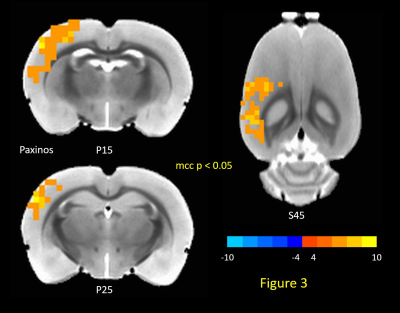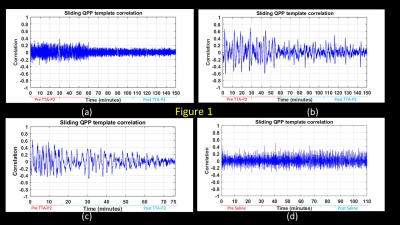Vahid Khalilzad Sharghi1, Eric Maltbie1, Wen-Ju Pan1, Shella Keilholz1, and Kaundinya Gopinath2
1Biomedical Engineering, Emory University/Georgia Institute of Technology, Atlanta, GA, United States, 2Department of Radiology & Imaging Sciences, Emory University, Atlanta, GA, United States
1Biomedical Engineering, Emory University/Georgia Institute of Technology, Atlanta, GA, United States, 2Department of Radiology & Imaging Sciences, Emory University, Atlanta, GA, United States
Suppression of cortical slow rhythms led to strong reductions in the
amplitudes of quasi-periodic patterns (QPPs). On the other hand, functional
connectivity in canonical brain function networks increased significantly.


